Table of Contents
Introduction
In the 21st century, new technological solutions and applications have changed several aspects of our lifestyle.
One activity that was particularly affected by the arrival of the digital era was reading.
The appearance of the first e-readers like Amazon Kindle has led to the appearance of digital books which has been rapidly growing ever since.
Naturally, this technological breakthrough had a marked effect on the status and the need for physical books. Since it became possible to
- order books with 1-click
- have them instantly delivered to your device
- and to store multiple books on a single device,
the demand for them reduced and the traditional book market shrunk significantly.
But not disappeared completely. Due to the fact that there is a marked difference between holding a paper in your hand, the fact that you don’t really own a digital product once you buy it 1 and the fact that the conversion of the old physical books in the digital format (and the formatting of the new ones) is not always very smooth, many people still prefer ordering their own physical copy of the book.
This is especially true of chess players, because of the following:
- Many chess players belong to the older generation(s) and are somewhat old-fashioned and skeptical when it comes to new technologies.
- It is difficult to read many chess books without a physical chess set.2 It is, therefore, more difficult to read them while laying in the bed or traveling, which diminishes comparative advantages of digital books.
- Chess books have a special format (annotations and diagrams). They are much more difficult to convert into e-book format. Many of them are converted poorly.
- Even when the conversion is smooth, diagrams take a lot of screen space and make it difficult to keep track of annotations (which are often on the next page). In such cases, it is much simpler to turn the page back and forth than to do it on a touch-screen device.
The existence of the issues above meant that, even after the appearance of first e-readers, there was a gap in the market when it comes to digital chess books.
This was recognized by some smart and capable people, who started working on the solutions. It was immediately recognized that every innovative solution should offer its users the possibility to make the moves on a digital board while reading.
That is why, in recent years, several products based on the concept of Interactive Chess E-books have been developed. Well established publishers like Everyman Chess and Gambit Publishing have come up with their own applications (Everyman Chess Viewer and Gambit Studio).
However, several new companies independent of the big publishers have also appeared on the scene. One of the new „players on the scene“ that has gathered a lot of attention, in particular, and become very successful is Forward Chess – an interactive chess e-book reader for mobile phone (iOS and Android) and desktop (Windows and Mac).
In this blog post, I would like to take an in-depth look at it and review its features, functionality, pros, and cons.
Hope you will find it helpful.
What is Forward Chess?
As mentioned above, Forward Chess is an interactive chess e-book reader/application.
In contrast to the traditional e-book readers which are „static“, Forward Chess -apart from the book text, diagrams and annotations – also provides the user with an interactive chessboard on which the reader can play through the moves in the book, try out his own lines and even analyze with Stockfish.
The basic idea is to provide every chess player (and not just strong ones) with the opportunity to read chess books without the need for a physical board.
What functions does Forward Chess have to offer?
From the functionality’s standpoint, Forward Chess has everything an interactive chess e-book reader should have:
- A very quick and immediately responsive interface
- Possibility to make independent moves
- Easily accessible engine analysis
- Opening and reference game database (available only on the desktop app)
- Possibility to store notes
- Possibility to bookmark parts of the book
- An easily accessible table of contents
- Customizable settings (board size, piece type, night mode, etc).
Last but not least, Forward Chess has a big choice of available books – 484. 3
Which leads me to the next point.
Difference between Forward Chess and other similar apps?
Now, you might be wondering what is so unique to Forward Chess compared to the afore-mentioned Everyman Chess Viewer and Gambit Studio and other similar apps? 4
To be fair, I haven’t tried using other apps myself, but from what I’ve read, I’d say the difference is not that significant when it comes to functionality. Sure, some of the apps might miss a feature or two (ability to store notes or to bookmark, for example), some people might prefer the other apps’ visual identity 5, but in general, I’d say there aren’t major differences in that regard.
However, what really sets apart Forward Chess from the rest of the apps is the number of books it has available. No one else comes even close to having 484 titles available in their library. For example, previously mentioned Everyman Chess Viewer and Gambit Studio have around 300 6 and 100 titles 7, respectively. The other apps from Watson’s list have significantly less and he pointed it out as their major drawback, as well.
Moreover, since Forward Chess is an independent company, it offers books from a variety of publishers – New In Chess, Quality Chess, Thinkers Publishing, Chess Stars, Chess Evolution, to name a few. Apps owned by publishing companies don’t have that luxury – Everyman Chess Viewer and Gambit Studio offer only titles published by Everyman Chess and Gambit Publishing. 8
How does the Forward Chess interface look like?
Now that we have gotten acquainted with the basic features of Forward Chess, it is time to take a look at its interface. Since I mainly used the mobile app, I will mainly refer to it and post corresponding screenshots. All the features also apply to the desktop app, which also has some additional functionality (namely, the opening and reference games database).
So, after we have downloaded, installed and clicked on the Forward Chess app, the home screen appears:
On this screen, you can see the list of the books you have purchased and the „STORE“ tab, from which you can make your purchases. Little plus, minus and pen signs on the right serve to organize your books in folders, while the fourth symbol (the little blue cloud) serves to log into Forward Chess using the credentials obtained from their website – which allows you to connect to the cloud and sync the mobile app with the desktop app and the website.
After you have purchased the book and it appears on your home page, you can click on it and open it, which lands you to the following screen:
Once we have opened the book, we navigate it as follows:
- The current chapter is navigated by scrolling up and down via the touch screen
- Going to the following chapter (or returning to the previous one) can be done via the black arrows in the lower right corner of the screen (or by scrolling right and left via the touch screen – this setting is adjustable)
Of course, the screen with only text is nothing revolutionary. Interesting things start to happen when we reach the very first chess game:
As we can see from the screenshot above, the moves and the diagram are displayed just like in a physical book. However, you may notice that moves are „blue“. By clicking on any of them (or by clicking the king symbol in the bar at the top of the app) we are able to open an interactive board with the current position after that particular move:
In this board, we can easily navigate the variations analyzed in the book by using the arrows below it (or by clicking the moves manually). The user can also make his own moves. Last but not least, Forward Chess comes with the chess engine Stockfish, which we can toggle by clicking on the symbol right to the king at the top of the screen to get the evaluation of any position (main variation, subvariations, our own variations):
The other two symbols in the top bar are as follows:
- The notebook symbol on the very left allows you to access the table of content and instantly navigate to any chapter
- The three dots on the right open a menu with settings from which you can enter notes, create bookmarks or choose your preferences when it comes to the board, the size of the board, the pieces, etc.
And that is basically it! It is very simple and intuitive to use Forward Chess and once you figured out how to open the interactive board and toggle the engine on, you are ready to enjoy your favourite chess book until the end.
However, there is a lot to be considered before you actually do start enjoying Forward Chess. As usual when it comes to technology – there are some advantages and there are some disadvantages of reading digital chess books on your mobile phone.
In the remainder of the article, I will weigh both the pros and cons of reading chess books on Forward Chess. In the end, I will wrap it all up with my own thoughts and experience.
The pros of reading chess books on Forward Chess?
Simple and intuitive
As I mentioned previously in this article, Forward Chess is simple and intuitive. It is easy to set it up and even people not feeling at home with technology should have no problems using it.
Stable and fast
Forward Chess is a very good app from a technical standpoint. It is quick and responsive. There is no delay or lag of any kind. I haven’t had a single instance of the app crashing – it is something that is not valued enough in the world of poorly coded applications that keep causing problems for their users.
Great selection of books
As mentioned previously in this article, arguably the biggest comparative advantage of Forward Chess compared to its competitors is its vast library, which constantly seems to be expanding.
No need to set up the chessboard
When reading physical books, only very strong players (or those with incredibly developed visualization skill) are able to read the book without the need of the chessboard – especially if it is full of long and dense variations. The interactive chess board completely eliminates that need.
Ability to analyze positions from chess books with a chess engine
Not a single chess book in history is not without its mistakes. Fortunately, the appearance of chess computer engines has made it easy to check the material provided by the author, do our own analysis and correct the mistake.
However, in order to do this, we still need to put the book down, enter the game into our computer and run the engine. And even though all publishers provide you with accompanying .pgn file when you buy a certain book, it is still somewhat inconvenient.
The ability to analyze a position simultaneously while reading is extremely handy. Especially when reading an older book like Soviet Outcast, since it contains many „holes“ in the analysis (which is not surprising consider engines didn’t even exist at a time when it was written).
The cons of reading chess books on Forward Chess?
Somewhat clumsy and tough to navigate
Even though I have said that Forward Chess is simple and intuitive, it was also somewhat inconvenient to navigate. I frequently accidentally scrolled to the next chapter or wrong part of the book, if I wanted to jump between moves in a certain variation, I’d miss them and I sometimes felt the screen was not big enough when book diagram, interactive board and engine were all turned on.
No need to set up the chessboard
Now, I know this might be inconsistent since I mentioned this as one of the advantages, but I also think there are some inherent dangers to reading chess books without the chessboard. 9 I think reading digital books has a detrimental effect on our visualization. I have also heard some people complaining about how it is difficult to adjust to real boards in real-life tournaments.
Finally, I think digital books make us more likely to switch off our brains and go on autopilot. Which leads me to the next point.
Ability to analyze positions from chess books with a chess engine
Even though it is definitely useful to have the ability to analyze a chess position with a chess engine, it is another double-edged sword. It is well known that deliberate practice is the best way of improving your chess. Few chess players have the discipline to think on their own when they can get instant answers by pushing just one button.
Engines are tools that may help our thinking process.
Not the substitute for our brain.
Purchasing digital books is not the same as owning them
I have recently read a very interesting book titled Who Owns The Future which basically states that there is no such thing as „free lunch“ when it comes to technology and that every convenience comes with a hidden cost.
In the context of digital books, it made me aware that, in contrast to physical books, they don’t really belong to the owner, but to the company. You can’t lend them, you can’t sell them after the use and most importantly – it is not very certain what happens with them if the company that issued them ceases to be.
Of course, it is highly unlikely that companies such as Amazon will go bankrupt. But in his excellent review on chess.com, Sam Copeland did point out that the risk margin is significantly greater when it comes to Forward Chess, as the niche is much more narrow.
Of course, the company seems to be doing fine for the moment, but it is unclear what happens with your purchases if they ever go out of business.
The hidden cost(s) of using too much technology
Last, but not least, another factor not typical only of Forward Chess, but highly relevant in this context – let’s not forget that there are dangers connected to technology and spending too much time on your smartphones.
In fact, writing anti-technology articles has become a separate discipline 10 and I will not reiterate all the arguments that can be found all over the Internet.
Except for one. In his book Why We Sleep, scientist Matthew Walker talks in great detail how staring at the screen before sleeping has a bad effect on both our capability to sleep and our quality of sleep.
For me personally, this was a huge factor. I usually do a lot of reading in the evening, before going to sleep. I believe it is much healthier to go for the good, old-fashioned physical book than to stare at a digital board in the (late) evening hours. 11
Conclusion
Throughout this article, we have gotten acquainted with the Forward Chess app and talked about its positive and negative aspects. In this final paragraph, I’d like to share some of my additional thoughts and talk about how this article came to be.
I decided to write this post after I was contacted by the Forward Chess representative. They did provide me with the free copy of the book Soviet Outcast. I have also agreed to become an affiliate and included several links in this article (and elsewhere on the blog).
However, if someone asked me whether I will continue to use Forward Chess myself, my answer would probably be: „Probably yes, but not 100% of the time!“. I don’t see many advantages of reading chess books without diagrams (such as Genna Sosonko’s books) on Forward Chess over reading them on Kindle, while I am also trying to develop a habit of reading chess books with the use of the board because I believe it is more beneficial for my chess.
Now, since I have a policy of reviewing and advocating products I personally use, I’d like to clarify why I deviated from it in this particular instant. 12
I decided to write this review simply because I think that many people will find Forward Chess useful and more appealing than I did. Several people whom I respect greatly – most notably the host of the Perpetual Chess Podcast Ben Johnson – advocate it and use it on a regular basis.
I think Forward Chess is particularly great for working adults with families and very busy schedules. My approach of reading chess books with chess board is definitely very time consuming and most people simply don’t have the liberty to go over every game in every book in great detail. 13 I think Forward Chess is a great choice for that type of audience, although I wouldn’t completely exclude myself ordering another book at some point in the future.
I would definitely urge everyone to try it, but also to think about some of the points I raised previously in the article.
If you do, let me know what you think in the comments!
Other useful links and reviews of Forward Chess
Forward Chess official website
Forward Chess Review by chess.com director of content Sam Copeland on chess.com
Forward Chess Review by grandmaster Alex Čolović
Forward Chess Review by John Watson
- Which is something I will talk in greater detail later in the article
- Especially if one is not a strong player with an ability to make the moves in his head or if the book contains a lot of lengthy variations in the annotations
- At the moment of writing.
- Many of which were mentioned in this excellent review by legendary John Watson you might definitely want to check.
- Although that is entirely subjective, IMHO
- The list of e-books available at Everyman Chess can be found here
- The list of e-books available at Gambit Publishing can be seen here
- Although Everyman Chess books are also available at Forward Chess, as well
- Which is not only characteristic of Forward Chess, but of all mobile and desktop applications
- Even though very few of them are based on actual research and data and got it all wrong
- It has to be said that many arguments from the book have been heavily disputed due to cherry-picking of the data. But I think this one has every right to exist.
- Apart from being a sell-out
- Or spend time on any kind of chess improvement, whatsoever

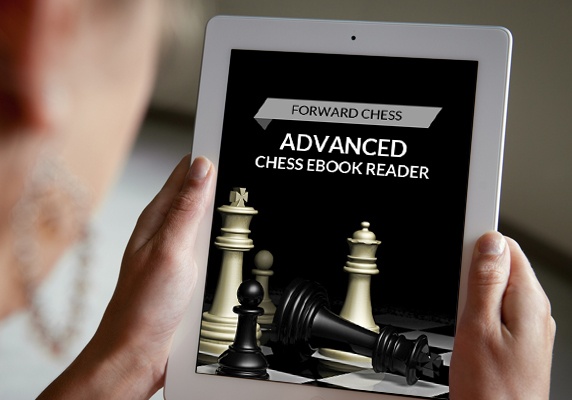

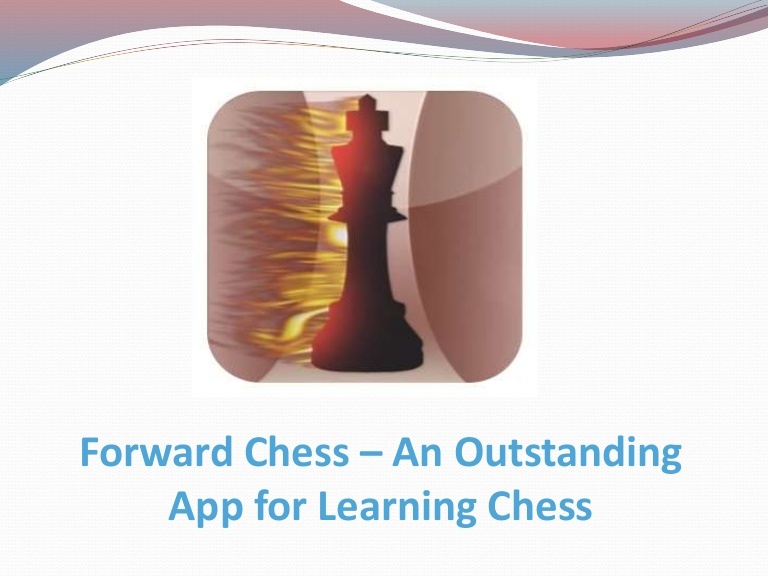
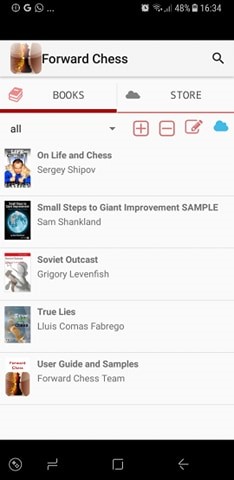

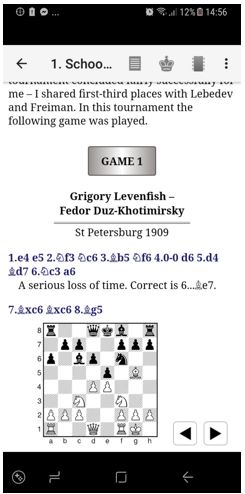
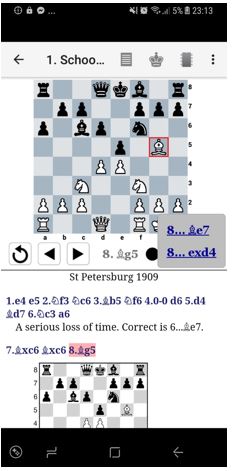
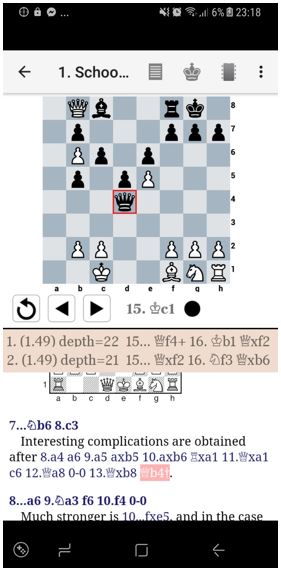
I am just getting in to chess now that I have lots of time (retired). Your review and the personality traits you describe are just what I needed. Reading chess books is a new adventure for me and I think the tedious work of placing pieces on a physical board is something I need. At least until I’m more comfortable with chess notation and positional awareness.
Thanks for this excellent review.
As a serious competitive chess player Forward Chess has been a Godsend to me. Before apps like forward chess you had to enter in all the moves from the book by hand into a chess GUI, which beats playing them out over the board, but the convenience of forward chess is very high.
For books that start from a position and not the entire game, you had to set up the position in the chess gui which is quite a pain. Forward chess makes it one click.